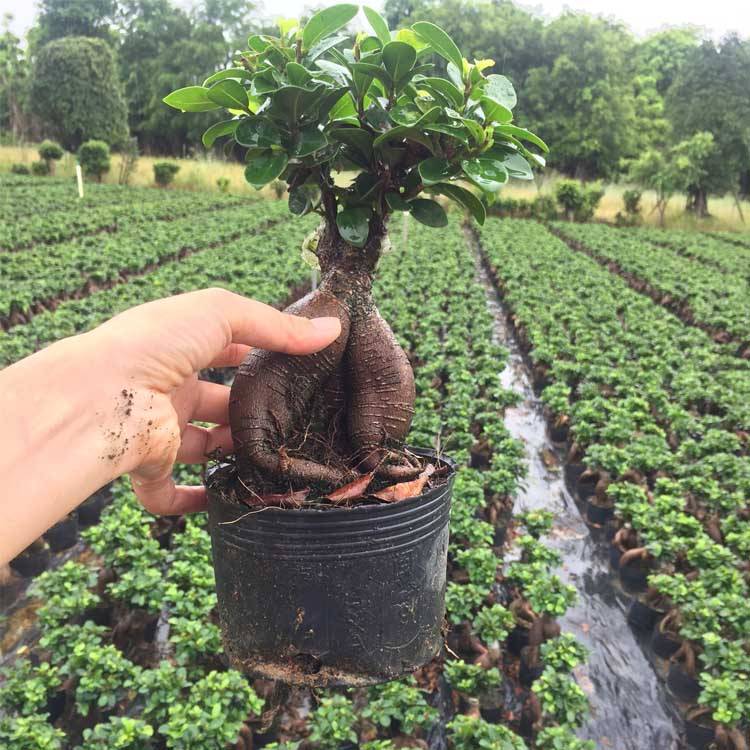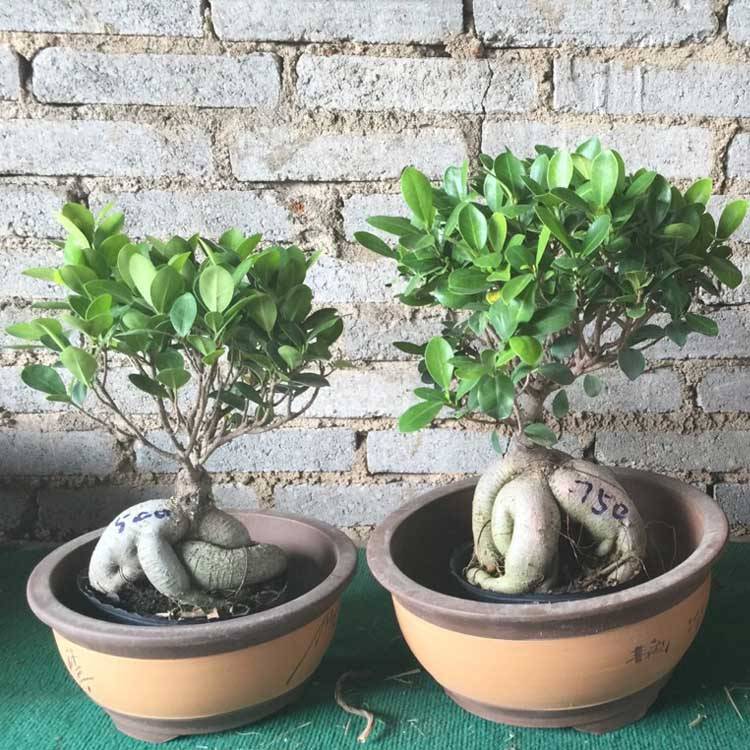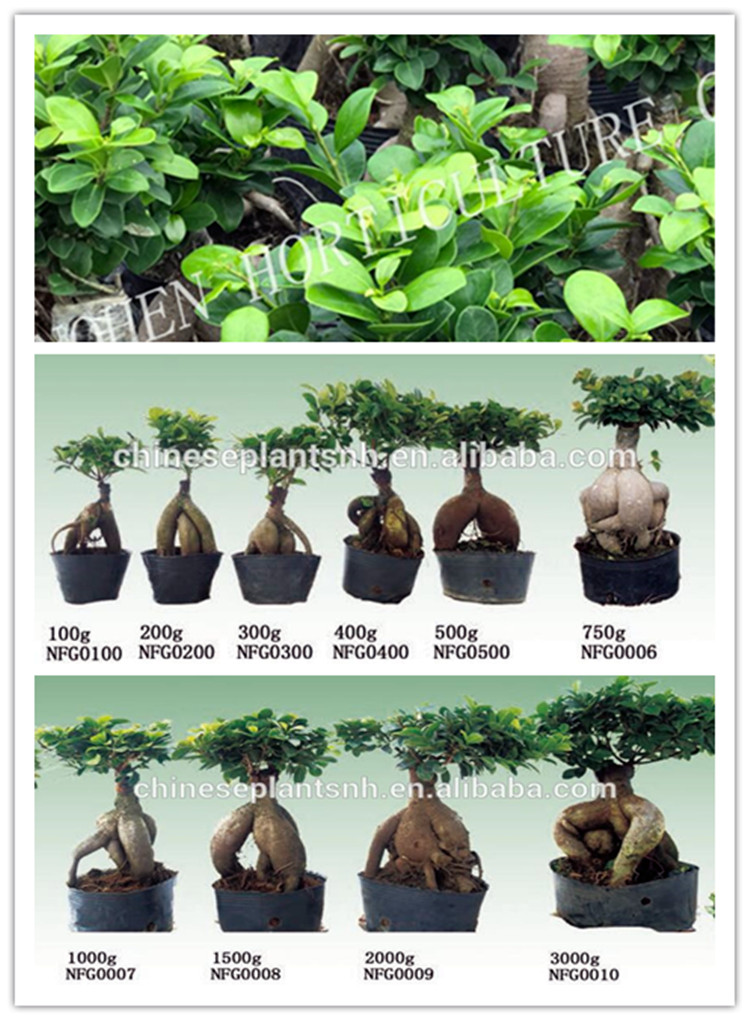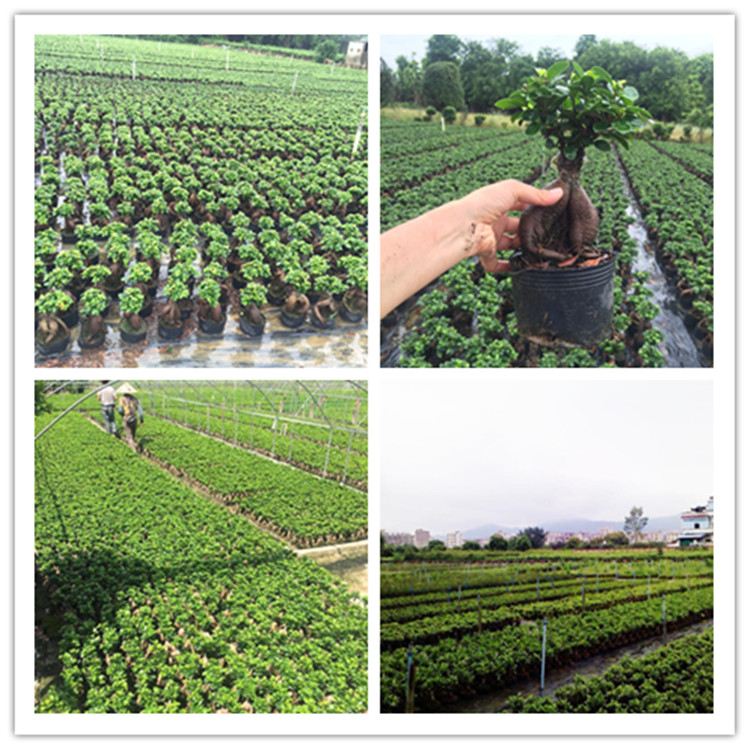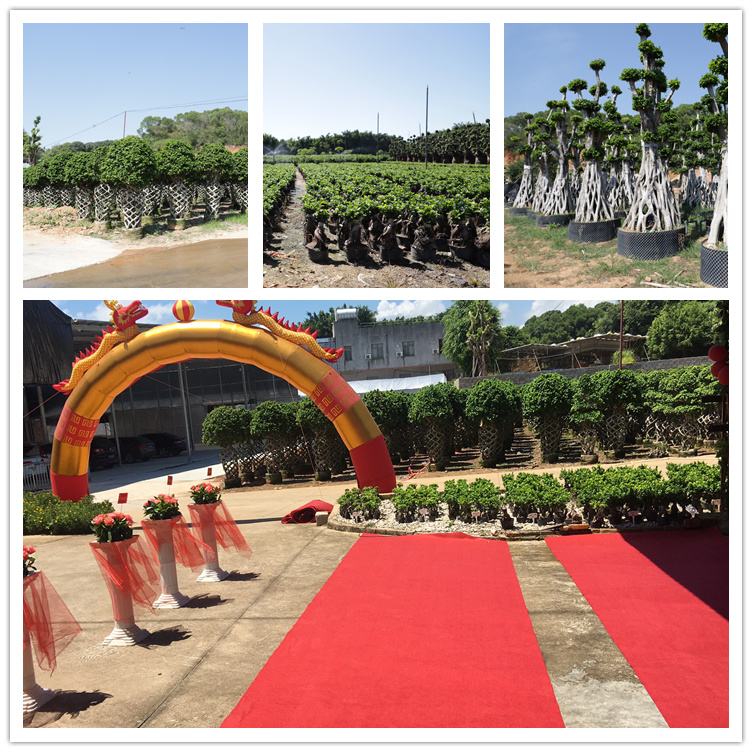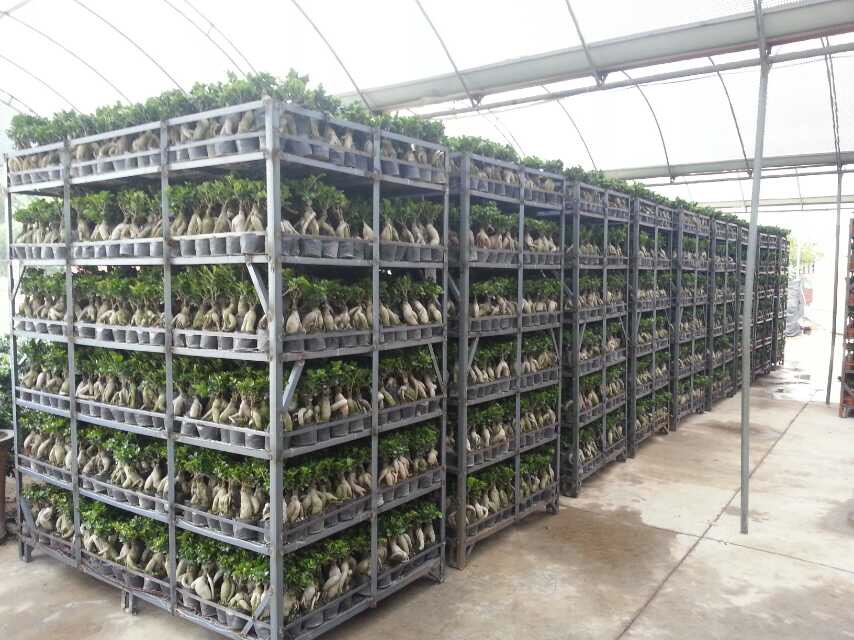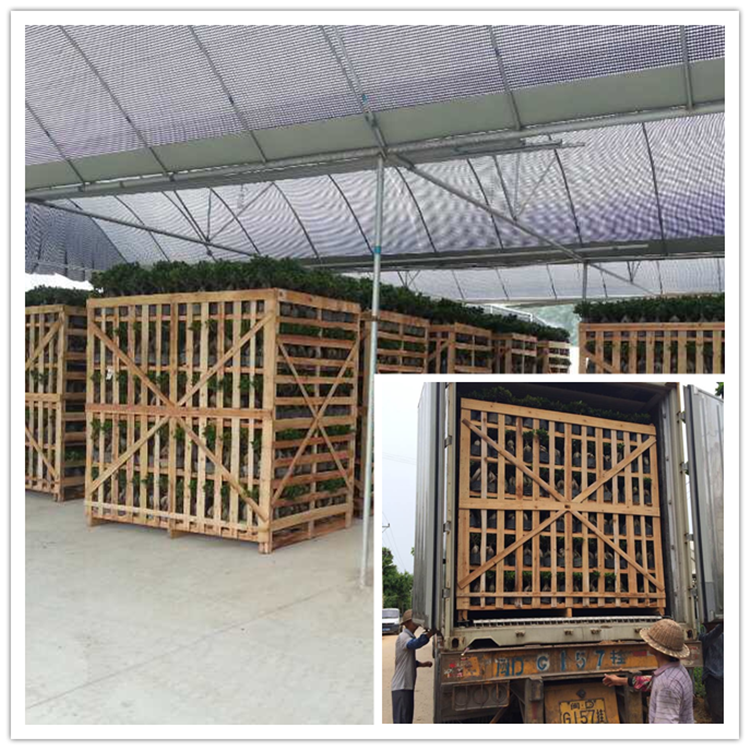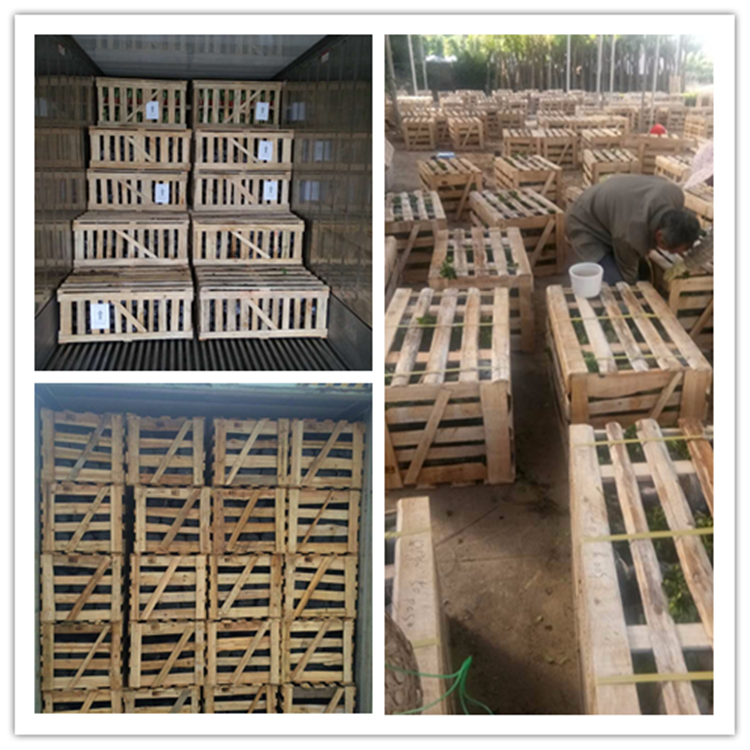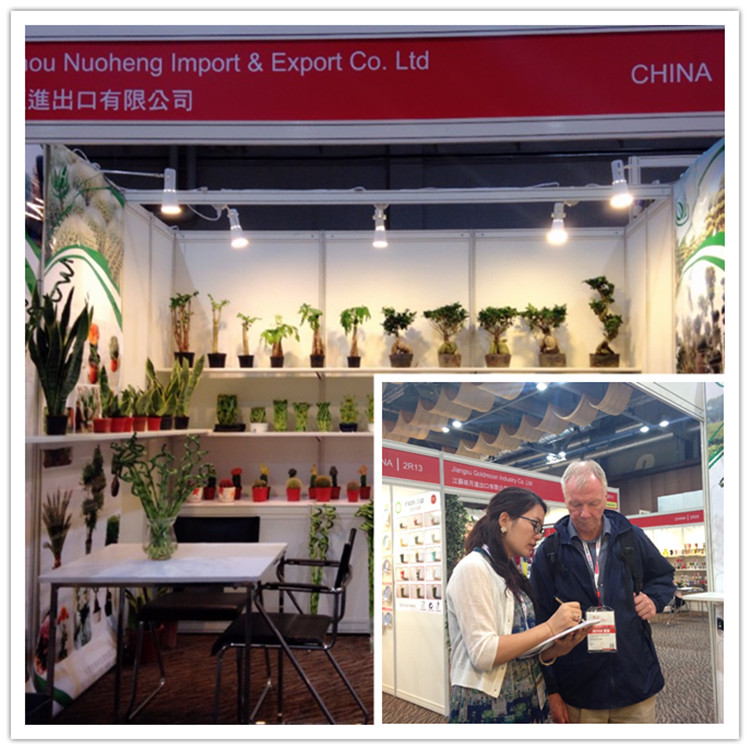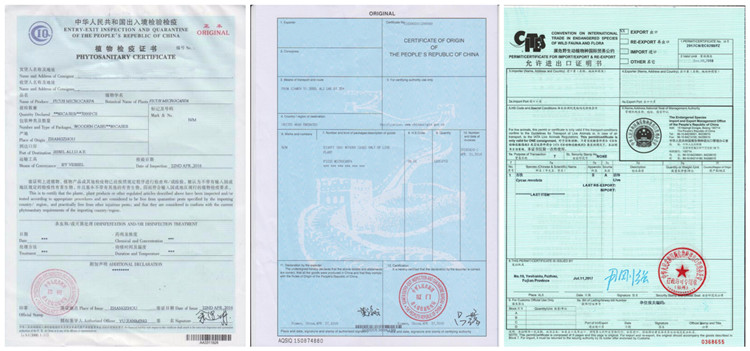Products
China Ficus Ginseng Small Ficus With Different Pot Different Weight
Details
Ginseng ficus is one variety of this large group of fig trees. Native to southeast Asia, the ginseng ficus is also called banyan fig, and laurel fig.It is most striking in appearance because it grows thick roots that stay exposed above the surface of the ground. As a bonsai, the effect is of a small tree standing on legs.
It’s unique looking, and is considered to be very forgiving for beginners. Growing ginseng ficus as a bonsai tree is a great idea for a hobby for yourself or as a gift for a fellow gardener.
Pests and diseases
Fig species are quite resistant against pests, but they are still susceptible to several issues depending on their location, and time of year, especially in the winter. Dry air and a lack of light weakens the Bonsai Ficus and often result in leaf drop. In poor conditions like these, they are sometimes infested with scale or spider mites. Placing customary insecticide sticks into the soil or spraying insecticide/miticide will get rid of the pests, but a weakened Ficus tree’s living conditions must be improved. Using plant lamps 12 to 14 hours a day, and frequently misting the leaves will help in the recovery process.
Packing & Shipping
package quantity
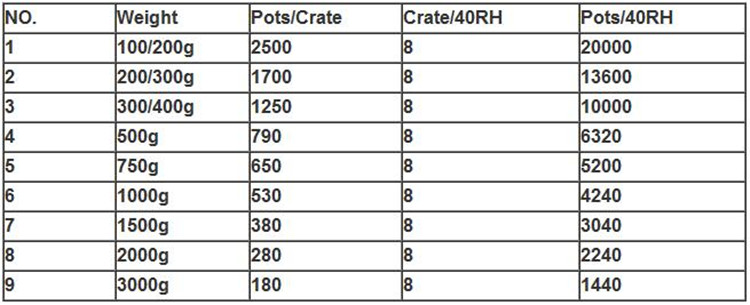
ocean shipment-iron rack
ocean shipment-wood rack
ocean shipment-wood box
Exhibition
Certificate
Team
How to grow Ficus Ginseng
Bonsai Ginseng ficus bonsai care is simple and making this a perfect choice for anyone who is new to bonsai.
First, find a good place for your tree. Ginseng ficus naturally grows in warm, moist climates. Place it somewhere that won’t get too cold and out of any drafts that could suck moisture from its leaves. Make sure it will get a lot of indirect light and avoid a spot with direct, bright light. Your little ginseng ficus will grow well indoors with warmth and light, but it also appreciates trips outside. Set it outdoors in the summer months in a spot that is bright with indirect sunlight, unless you live in an arid climate, in which case the air will be too dry.
A ginseng ficus will tolerate some over or underwatering, but aim to keep soil moderately moist throughout the summer and back off a little in the winter. To make the air more humid, set the tree on a tray filled with pebbles and water. Just make sure the roots aren’t sitting in water. Ginseng ficus pruning isn’t difficult.
The art of bonsai is to trim and shape the tree with your own aesthetic in mind. In terms of how much to trim, the general rule is to take off two to three leaves for every six new leaves that grow and develop.
Always leave two or three leaves on a branch at least. With just a little simple care, growing and maintaining a ginseng ficus as a bonsai tree is easy. It’s a creative project for a gardener or any plant lover that can last for years to come.

